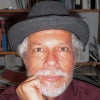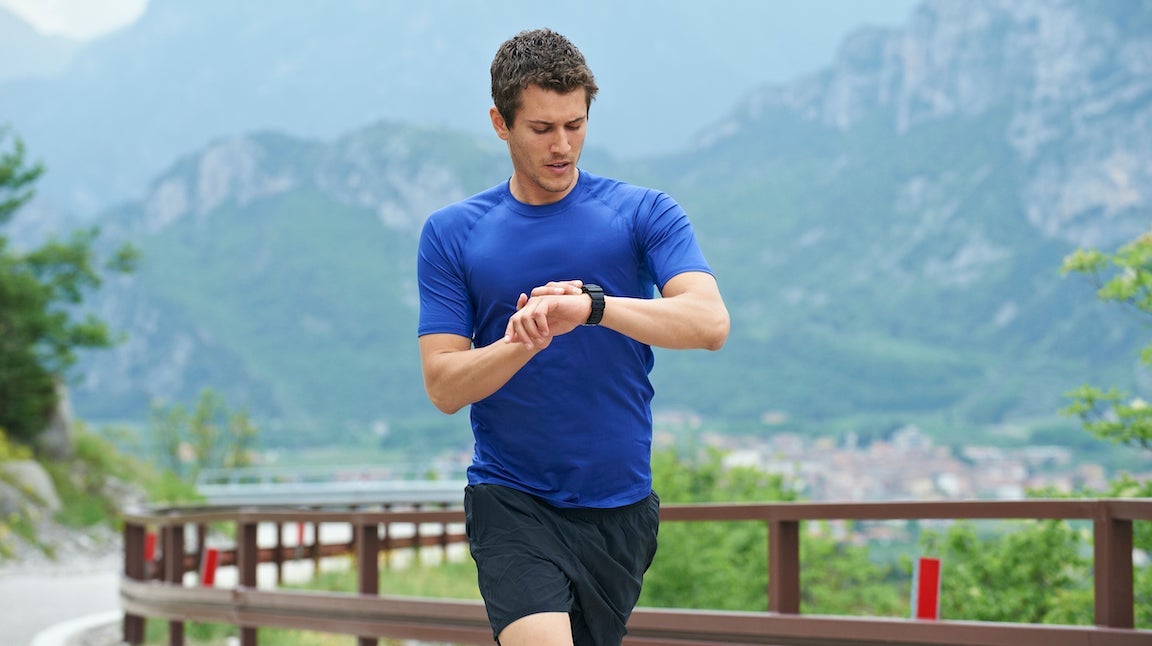Early this summer, four women in my running club and a friend from another group ran a virtual 10K. They all started at the same point, expecting that their devices would give them the same finishing point. But even though they were running the same route, they didn’t get the same result.
Some divergence is to be expected — the course had a number of curves, and while they ran on the same side of the road (facing traffic) there’s no reason to presume they ran the curves the same distance out from the shoulder. That could easily add up to several yards difference.
But the results weren’t even close — frustrating because two were trying to break their collegiate PRs and now had no idea if they’d actually succeeded.
The fastest one stopped when her GPS read 6.21, setting a mark to which the others then ran. But when they got there, their devices read between 6.24 and 6.27.
A few hundredths of a mile variation might not seem like much, but at their paces, each hundredth represented 3–4 seconds, and if you’re worried about a long-sought PR (or correct placement in a virtual race), the seconds add up. Not to mention the possibility that all of their devices might have been wrong.
Systemic Overestimation
Such concerns aren’t new. How many times have runners huddled after a race comparing their readings, trying to figure out if the course was accurate, and wondering why they got slightly different results? Why it is that a certified half-marathon often comes up as something like 13.24 miles, rather than 13.1?
Typically, it’s about a 1 percent error in distance, which also shows up as giving you a pace that’s 1 percent too fast. 2:32 marathoner Lindsey Scherf notes that if her GPS watch tells her she’s running a 5:20 pace, she’s actually running 5:23s, almost exactly one percent too fast. “I have run with Polar, Garmin, and TomTom GPS watches,” she says, “and they all seem to produce the same 3-second-per-mile differential.”
Many runners assume that the difference is because the GPS lost the fix, perhaps due to too many trees or tall buildings, which can indeed interfere with the signal. (In fact, it would later turn out that the lead runner in my club’s group had experienced just such effect for about .04 miles and only by coincidence came up running a distance that would later prove to be almost exactly 10K.)
But this doesn’t account for most of the error. The fact is that while GPS devices are an extremely useful tool, they can also lie to you.
It’s not just runners seeking PRs who have recognized this. In a 2016 paper in the International Journal of Geographical Information Science, a team led by Peter Ranacher of the University of Salzburg, Austria, examined this effect and, in dry, scientific terms, called it a “systematic overestimation of distance.”
Carre Heineck, one of the runners in my group’s time trial, describes the result more emotionally. “I was really frustrated, because our watches showed such different results,” she says, “a difference of 10 to 20 seconds.”
Not that she hadn’t hit her time goal. She’d done that with at least 40 seconds to spare, regardless. But maybe she’d actually beaten it by more than that. “To me,” she says, “10 seconds is a lot.”
Size and Weight Compromises

The fault doesn’t lie with the GPS process itself. In geophysics, researchers happily use it to monitor the movements of tectonic plates, which creep along at paces of at most a few centimeters per year. Volcanologists use it to monitor, with exquisite precision, ground movements that might presage an eruption.
But these require extremely sensitive sensors affixed to otherwise immobile objects.
Getting that good a fix also requires more time and computing power than your watch can provide. Not to mention that it’s expensive. “These receivers are on the order of $5,000 to $8,000,” says Kenneth Hudnut, a geophysicist with the U.S. Geological Survey in Pasadena, California. And, he says, “a runner would not want to carry one. They tend to be the size of a medium book and weigh a few pounds.”
A GPS watch requires compromises, both to control its size and weight and to conserve its battery life.
One is that it charts your course by taking a series of fixes, in rapid-fire succession: now-now-now-now-now-now, none of which is as accurate as those used by geophysicists. One fix might be behind you and to the right; another spot on; yet another ahead and to the left. The result is that the watch sees you running in a series of meanders, like a drunk staggering home from the bar.
To compensate, your watch may use a smoothing algorithm that attempts to use a series of these fixes in order to guess what you are actually doing. But the moment you try to convert now-now-now readings into averages, you run into new problems, which Ranacher calls “interpolation errors.”
Exactly how GPS devices do this appears to be a closely guarded secret. But it doesn’t take a Ph.D. in math to realize the conundrum. If the algorithm assumes that a series of fixes actually represent a runner going in a straight line, it can average them out and reduce the drunken-stagger effect. But if it does that too aggressively, it will be slow to spot when a runner actually rounds a corner — probable explanation of why GPS devices are notoriously inaccurate on tracks.
All of which is very frustrating if you’re running a time trial or virtual race and really, really care about the difference between, say, 37:59 for a 10K and 38:21 (1 percent slower).
Gyroscopes, Wheels and Digital Maps

One solution, Hudnut says, is to look for a watch that also has a gyroscope, which helps track changes in motion, irrespective of GPS. “Gyros are often used to assist GPS,” he says. “Where the gyro is strongest, the GPS is weakest, and vice versa. The technologies are complementary.” If he were designing GPS watches for runners, he adds, “the thing to improve would be the gyro.”
Historically these are have been pricey, and geared primarily toward triathletes and trail runners, but that is changing, and it’s likely that there will soon be an entire new generation of running watches sporting them.
But that’s not the only way to improve the accuracy of your readings.
In order to determine just how far (and fast) my runners and their friend had run, three of us went back and remeasured the course with three different technologies. One ran the course with a surveyor’s wheel. Another used a calibrated Stryd foot pod (which uses foot motions to measure distance). I used Google’s satellite-based course-mapping website, gmap-pedometer.com to measure it from space.
When it comes to measuring running distances, the gold standard is a device called a Jones counter, which mounts to a bicycle and, when properly calibrated, is accurate enough that it’s used to certify race courses. But most of us don’t have one at our disposal, and they do require rigorous calibration each time you use them to account for tiny differences in the air pressure in your bike tires.
In my experience, gmap-pedometer.com is nearly as good, so long as you can spot important landmarks (such as the start and finish) from the satellite images, and don’t lose sight of the course beneath trees. In tests on known distances (such as a football field), I’ve found it to be accurate to within 0.1 percent, and possibly better, with the primary limitation being the detail of the satellite maps available for your chosen running course. It works best on straight lines, but I’ve used it to measure the curves around a track to within 1 meter per lap.
Happily, it and the surveyor’s wheel produced almost identical results — close enough that the difference was probably due to how the runner with the wheel negotiated the turns. And while the surveyor’s wheel is not considered accurate enough to certify a running course, it is accurate enough for surveyors and road-construction crews. (I myself have tested it on a track and found it to be extremely accurate, limited primarily by my ability to steer it in a straight line.)
The Stryd foot pod was also remarkably close — within a few meters of the satellite and the wheel.
And all of them suggested that the various GPS devices had been off by between 1.0 percent and 0.65 percent — almost exactly matching Scherf’s experience.
Hedging Your Readings
So, what’s a GPS watch user supposed to do?
One answer is to test your watch on courses of known distance. In my city, we have a bike path whose miles are marked with what appears to be extremely good accuracy. If you have the option, test the watch on both a straight-line course and a curvy one. A certified road course might serve for the latter, though realize that it will have been measured assuming you are running tangents that might not be wise to attempt without traffic control.
Alternatively, measure out a route with gmap-pedometer.com or a surveyor’s wheel and test the watch against that — doing it more than once (on different days), just to make sure it gives you the same result each time.
Once you’ve determined how far off per mile it is, you can then use it with greater confidence for time trials and virtual races, adjusting your distance appropriately; e.g., running 3.14 miles for a 5K rather than 3.1. But also realize that no measurement other than a track or an actual race on a certified course (with traffic control so you can run the tangents) will ever be 100 percent accurate.
And relax. Even if it’s not perfect, your GPS watch is an extremely useful tool and tells you your distance and pace far more accurately than old methods like driving a route. Don’t get too obsessive over those uncertain hundredths of a mile, however frustrating they might sometimes seem.


